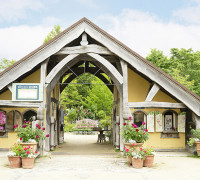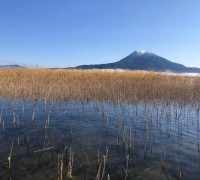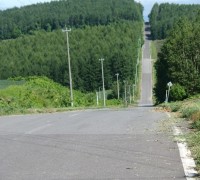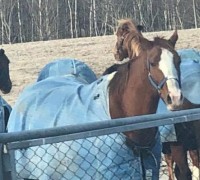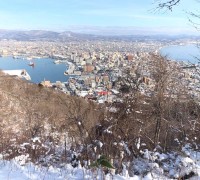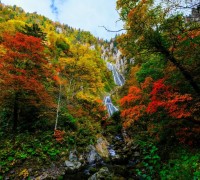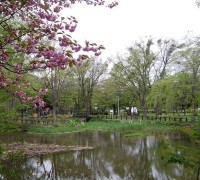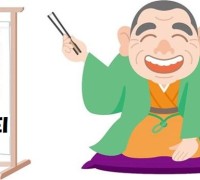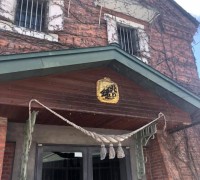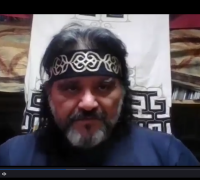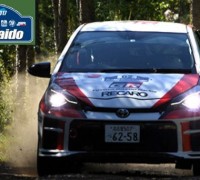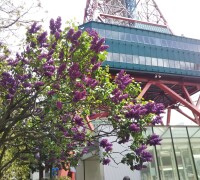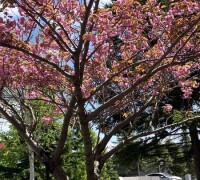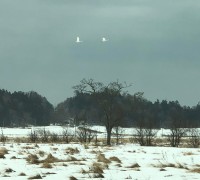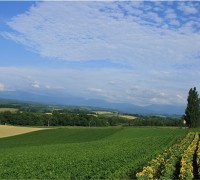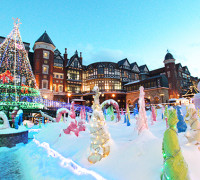Japan’s surface area is about the same as the state of California, and the northern island of Hokkaido accounts for about a quarter of this total. Despite its size, only 5% of the country’s population live there, and as recently as the mid-19th century there were only 50,000 Japanese people living in its southern reaches, in addition to the indigenous Ainu population.
Around this time, a stream of people began to head to the island with dreams of the frontier. These settlers made various attempts to establish industries suitable for the climate and landscapes that they encountered. This is how horse breeding began in the Hidaka region.
The Hidaka Mountain Range runs for 150km from north to south through central Hokkaido, A number of rivers flow down from its high peaks, forming gently sloping river terraces as they approach the sea and turning into alluvial fans that flow into the Pacific Ocean. The soil in this area is rich with nutrients carried down from the mountains. Although the side of Hokkaido facing the Sea of Japan experiences high levels of snowfall, the volume is much less on the Pacific Ocean side. The summers are also generally cool due to the mixing of warm and cold ocean currents and moderate mists form on occasion. The low levels of winter snowfall and cool summers make for perfect conditions for raising horses.
The development of horses was promoted as part of the modernization of Japan that took place during the mid-19th century, and the Hidaka area played a role in this advancement from the early stages. Horses were introduced from abroad, western-style stables and fences were built, and feed production began. Horses for use by the imperial family and in the military were raised in the area, but the focus shifted to the breeding of racehorses when horse racing became fully established in Japan following World War II. Today, more than 80% of Japanese racehorses are from Hidaka and the area’s reputation for producing horses is firmly established both among the Japanese public and horse racing enthusiasts.
The JRA Hidaka Ikusei Ranch in Urakawa is a major center for horse rearing. Starting from the gentle hills that lead to the Hidaka Mountains, it has a total area of about 1,500 hectares, about five times the size of Central Park in New York. Some 500 yearlings are trained here every day. A horse’s potential cannot be predicted simply from its pedigree, and training regimes are devised in consideration of their individual characteristics. They undergo various types of training up until the spring when they turn two years old.
In addition to the grass and dirt tracks in the vast fields and sloped grass track, training also takes place on a 1,000-meter indoor straight track. 25 centimeters of wood chip are laid down in order to reduce the strain on the horses’ legs.
When training on the indoor straight track begins, horses can be seen sprinting from 1,000 meters away to the finish line. Visitors are able to follow the horses in full flight using telescopes at the window on the second floor. Each horse’s individuality can be seen in the way they run. Some raise their necks out in front as they go, while others take slightly erratic steps and sway from side to side.
In the spring, when the ranch’s cherry blossom trees are in full bloom, the young horses that have been sold at auction depart from their ranches one by one to set off on the road towards a bright future in racing.
(This article was written in a project involving our company sponsored by Hokkaido District Transport Bureau)
RELATED ARTICLES
-
The Odori Park in Sapporo
-
Double-flowered cherry tree are beautifully blooming.
-
The spectacular night view of Sapporo
-
Marimo at Lake Akan
-
What is a trip for kids?
-
Beautiful Japanese Crane Tancho in Kushiro, Eastern Hokkaido
-
Ecorin Village in Eniwa: A Town of Flowers and Ecology
-
Pleasurable Farming Tours in Hokkaido
-
Experience Contemporary Ainu Art at the Foot of Mt.Hakkenzan
-
The present-day Ainu and Iomante -from the story of th...

